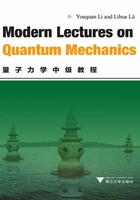
上QQ阅读APP看书,第一时间看更新
1.3 Non-relativistic Limit
The equation describing the motion of a charged Dirac particle in electro-magnetic field(A0, A)can be written out in terms of the general rule

Employing these replacements in the stationary Dirac equation(1.19), you have

where q denotes the electric charge that the particle carries. Examples of the exact solution for Dirac equation in an external field are rather scarce. The problem of a Dirac particle moving in Coulomb potential or in a uniform magnetic field can be solved exactly, which is left for readers as an exercise. In this section, you are suggested to discuss non-relativistic limit for the Dirac equation.